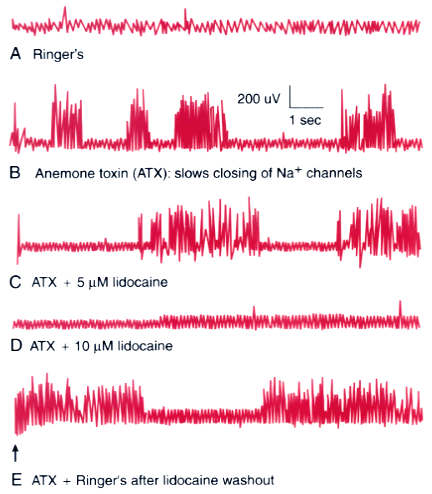 |
 |
Figure 14-10
Spontaneous ectopic impulses in "abnormal" nerves are
blocked by very low concentrations of local anesthetics. When 10% to 20% of the
Na+
channels close very slowly, as caused here by the addition of a peptide
neurotoxin (ATX), but otherwise an intrinsic property of channels that are upregulated
after nerve injury, spontaneous impulses appear (trace B). Occurring as bursts of
action potentials separated by quiet periods, these impulses appear similar to the
ectopic discharges in a peripheral nerve after injury. Very low concentrations of
lidocaine, equal to plasma levels during intravenous infusions that can reverse neuropathic
pain, strongly suppress (C) and eventually abolish (D) these spontaneous discharges,
an effect that is reversed when lidocaine is removed from the nerve (E). In contrast,
electrically stimulated action potentials are unaffected by such low lidocaine concentrations
(e.g., see Fig 14-8B
).
(From Persaud N, Strichartz G: Micromolar lidocaine selectively blocks propagating
ectopic impulses at a distance from their site of origin. Pain 99:333–340,
2002.)

 |
